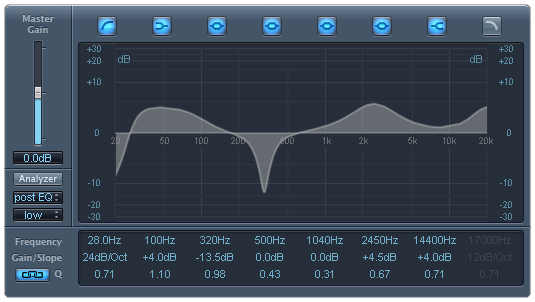Music Production – Seperation
After recording a mix, it may appear ‘muddy’. All of the sounds seem to blend into each other, and distinguishing individual instruments may be difficult. There are a number of procedures to allow tracks to piece through the mix a little better.
EQ in music production is the alteration of frequencies within a audio file. This is useful to remove unwanted noise from a recording, or to boost favoured frequencies to allow them to standout within the mix.
EQ is an essential tool within mixing drums, to cut out bleed from other drums into the incorrect microphone, and to boost the frequency the correct drum occupies.
When a cymbal is EQ-ed it is likely a low-cut filter will be applied. This cuts out all frequencies on the lower end of the spectrum, as the cymbal will not occupy these frequencies, and any sound here will be noise.
Equally, a high-cut filter will be used on a bass drum to remove noise and bleed from higher sounds and cymbals.
Another technique that allows instruments to be heard better within a mix, is panning. With almost every stereo track, you’ll notice there is a distinct difference between the left and right channel. By using the stereo field to your advantage, a sense of realism is achieved, by giving the listener an impression of space.
